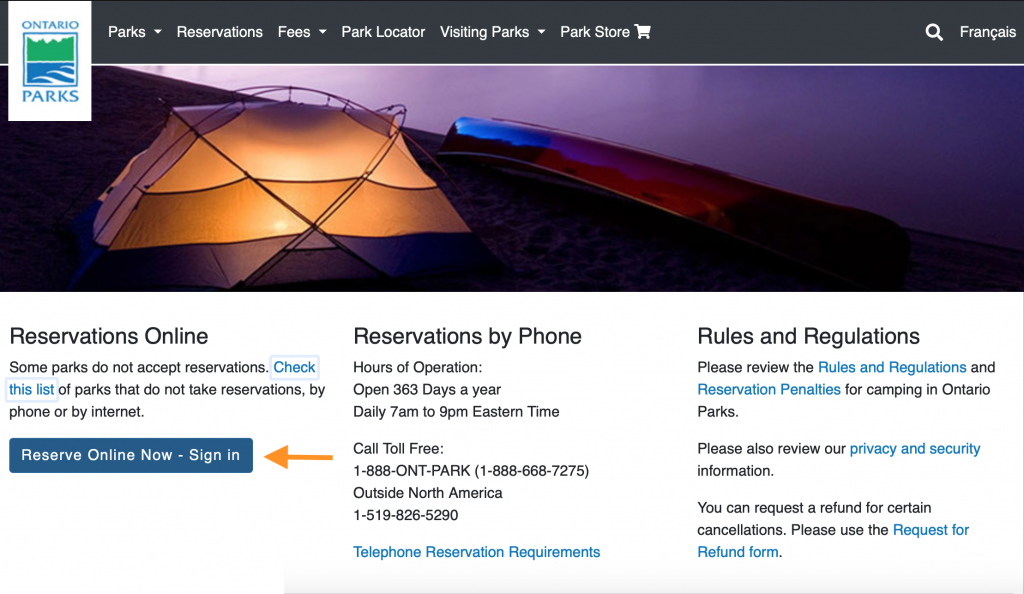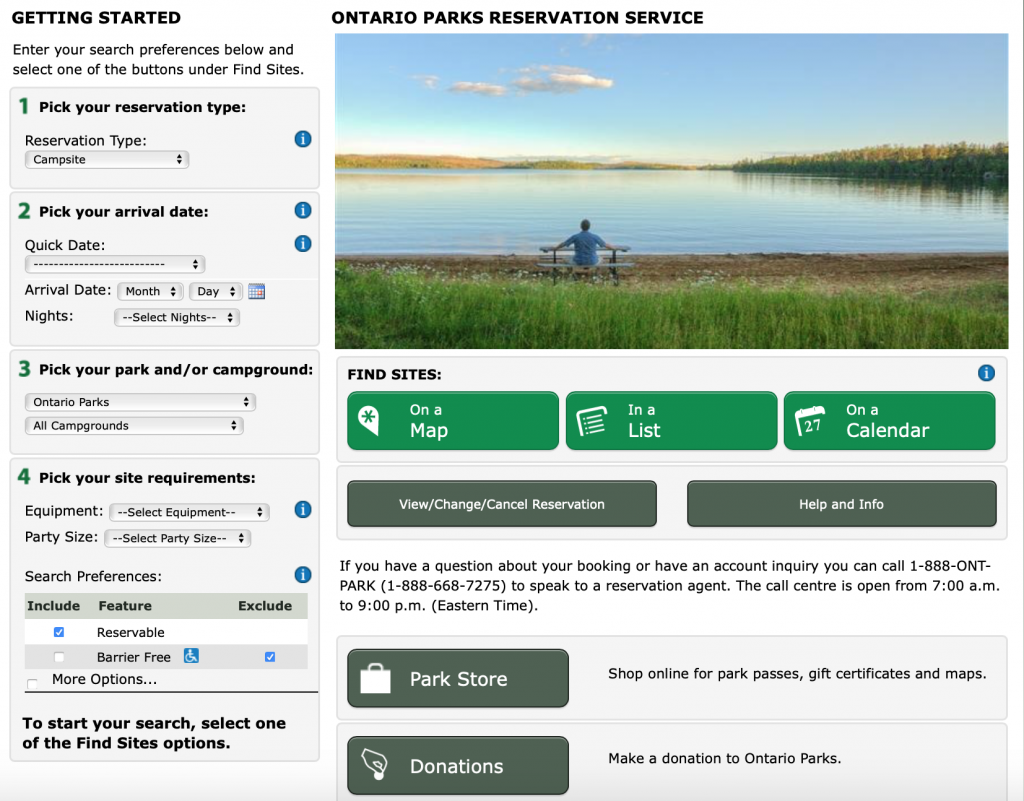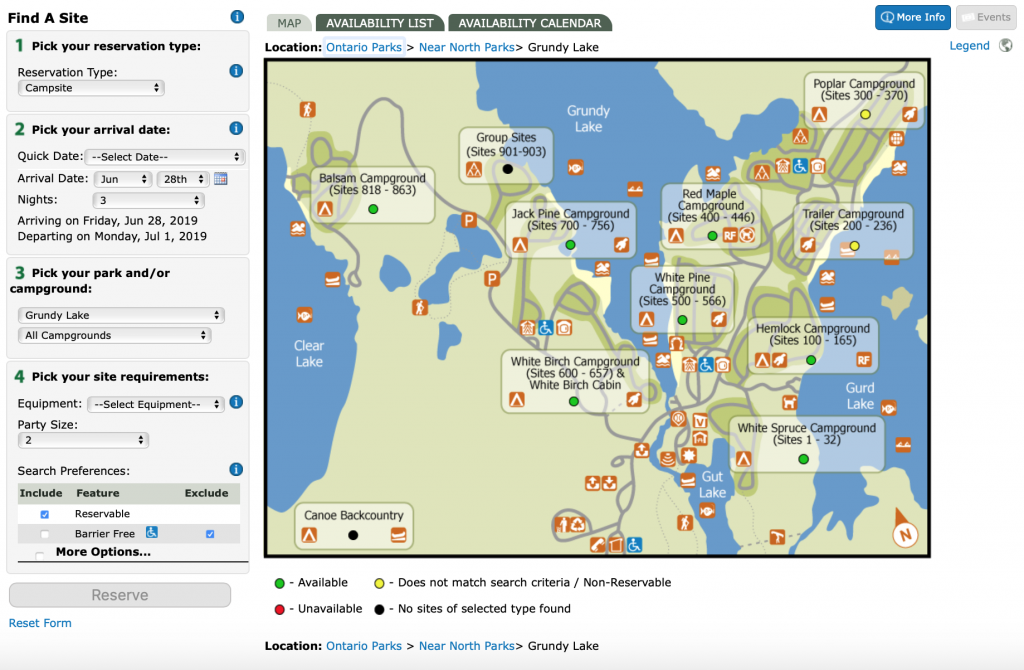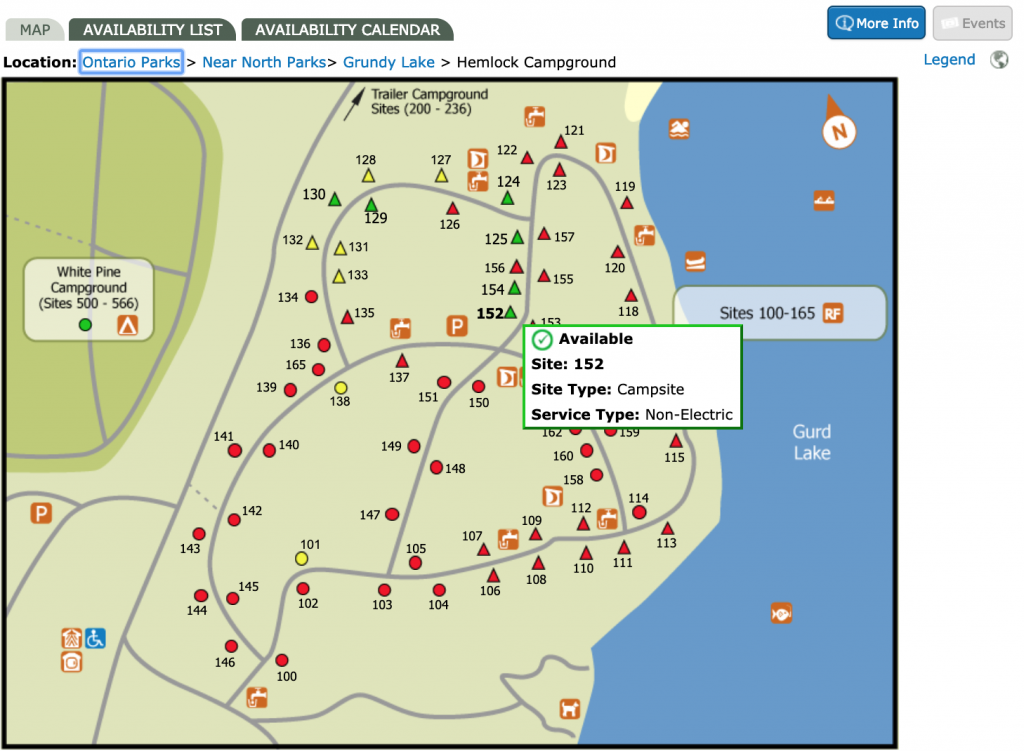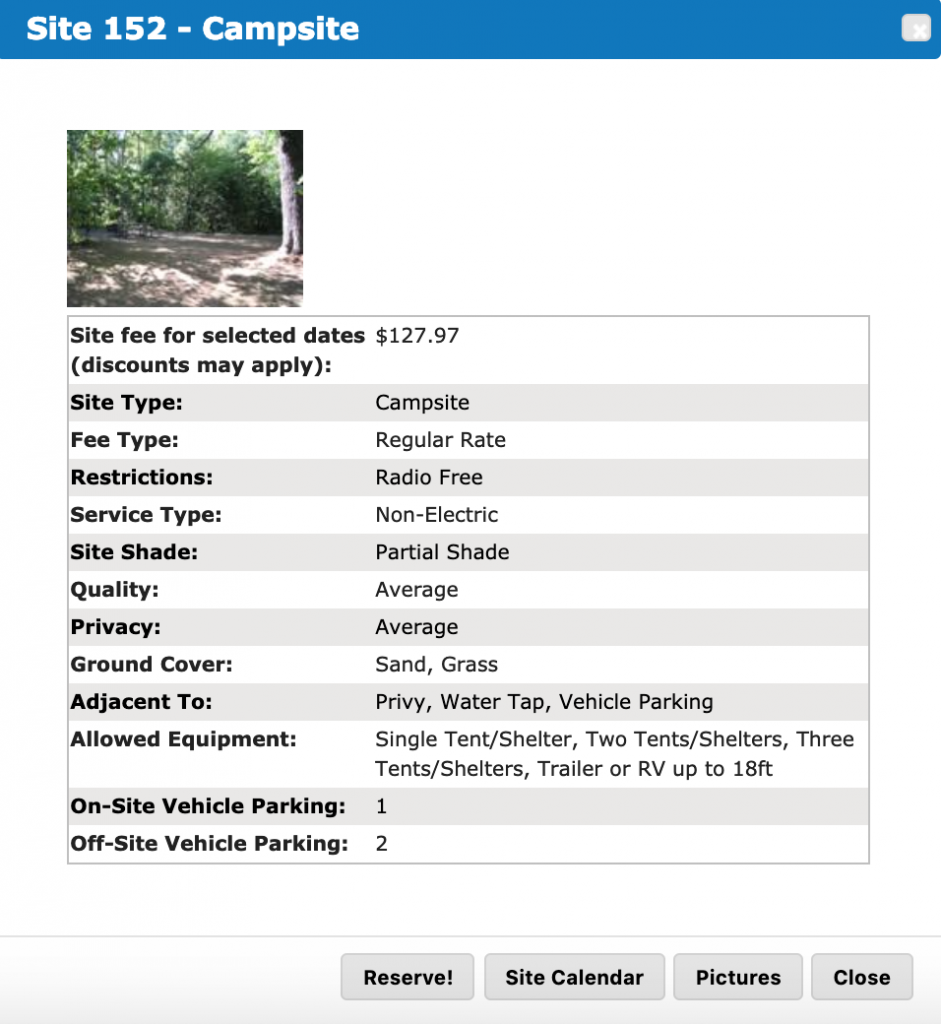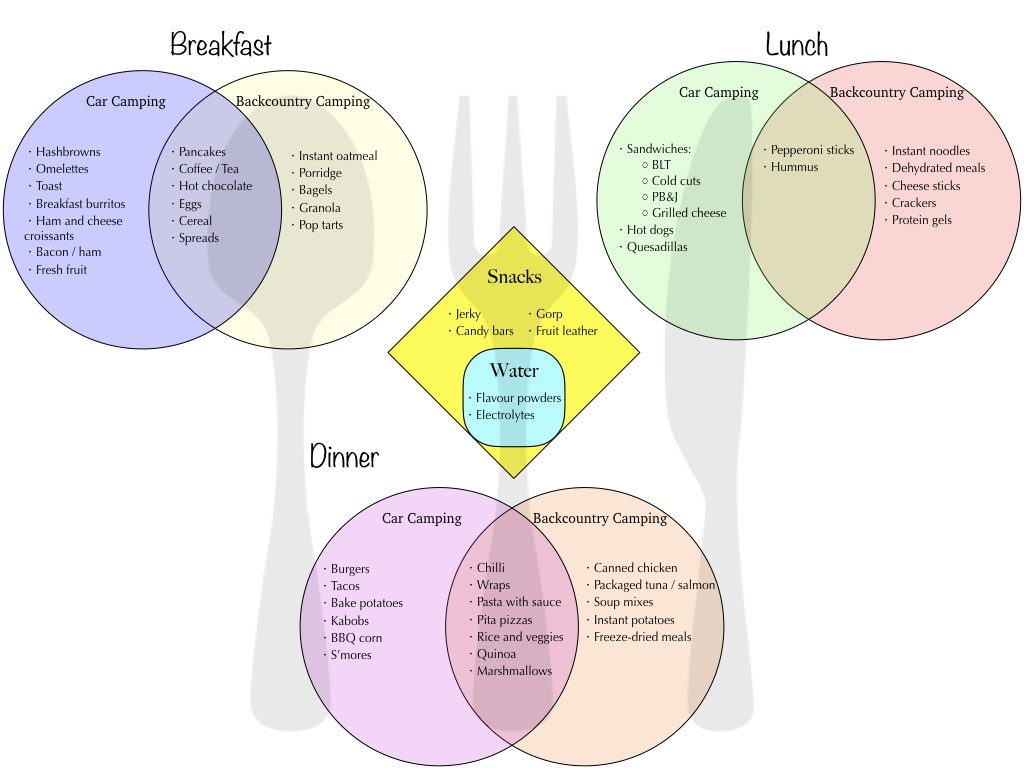Whether it’s a quick weekend getaway or an extended trip, camping in Ontario is the perfect opportunity to escape our daily routine. A time to bask and recharge in the great outdoors.
For some, it’s the quintessential summer activity. It’s relatively inexpensive and great for individuals, couples and families!
However, a lot of people find even the thought of camping intimidating. But why?
Well, perhaps the biggest factor limiting most want-to-be campers is the perceived amount of planning and preparation. Where should I go? What equipment do I need? What would I eat? And, what do I do when I’m actually camping?
But, never fear! You too can go camping in Ontario like a pro! You too can build your confidence and fulfill your spirit all thanks to mother nature [and this article].
1. Camping Types Explained
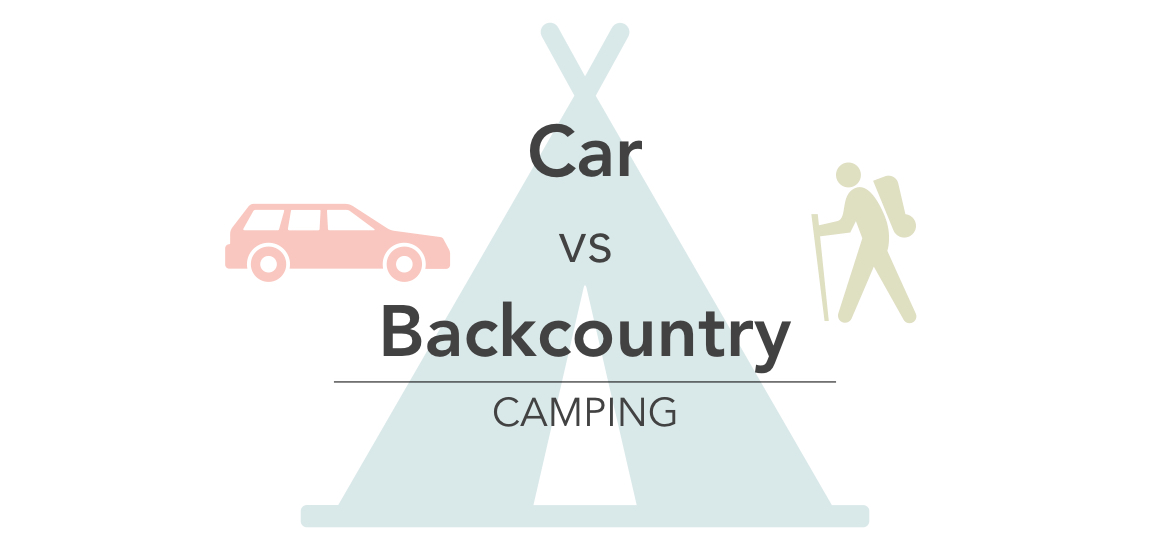
Camping is traditionally split into two categories: Car Camping and Backcountry Camping.
For those unfamiliar, here’s a quick explanation of the two.
What is Car Camping?
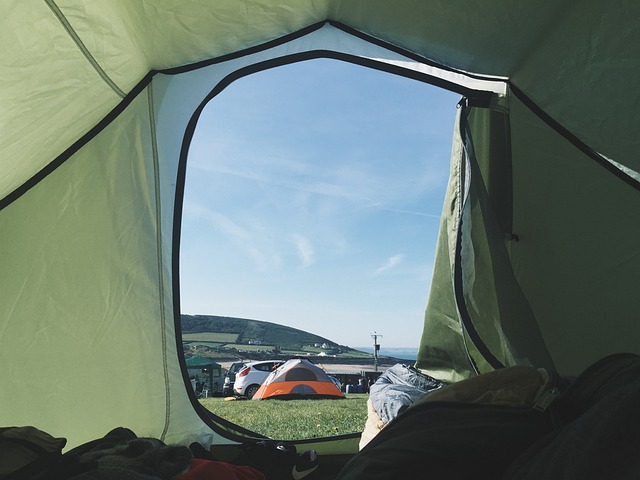
If you’re just starting out, car camping is a great way to ease yourself into camping in Ontario. You essentially drive to a campground, find your camp site, park your car and set up all your essentials close by.
Usually, a lot of amenities are included at campgrounds:
- Running water
- Bathrooms with flush toilets
- Showers with hot water
- Picnic tables
- Fire pit
- Electricity
It’s convenient in the sense that you have a lot of the comforts of home. Also, you can pack and bring more items with you since your car is doing all the heavy lifting and storage.
But, campgrounds are usually densely packed with campsites. Solitude and privacy can be an issue, and wildlife tends to be sparse.
Pro-tip: If it’s your first time car camping, make sure you bring the right gear. Check out Car Camping – Gear & Equipment Guide.
What is Backcountry Camping?
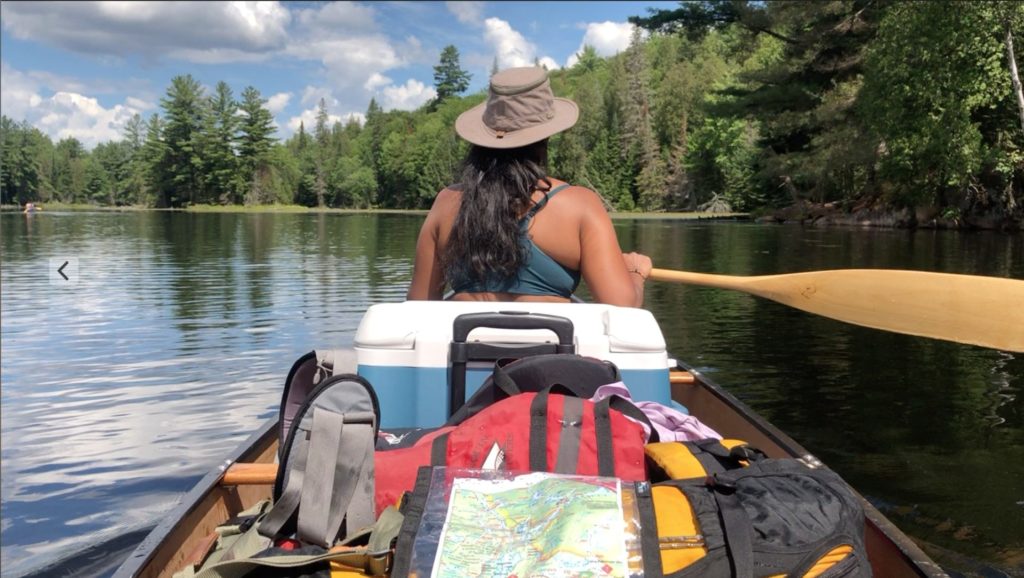
After mastering car camping, the next level is backcountry camping.
This essentially means you are off the grid and camping at sites in the wilderness with limited to no amenities. Everything you need is packed in [and out] with you.
At most provincial and national parks in Canada, there are usually designated backcountry sites. Each site comes with at least a picnic table, a fire pit, and an “eco friendly” toilet which turns into a bidet if it’s raining, yay! Just kidding…
Pro-tip: If you’re curious about the washroom situation, check out How to Pee and Poop While Camping.
These sites are only accessible by foot or by canoe. And sometimes, “portaging” is required to get to sites deep inside parks [i.e., carrying your canoe and gear short distances over land between bodies of water].
If you want to truly experience nature in all of its glory, backcountry camping is it. Far less people venture into the backcountry in Ontario so it can be a more pristine and genuine camping experience.
And, you don’t even have to grow a grizzly beard or become a survivalist to do it. Just plan, prepare and take progressive steps towards attempting it and you’ll be alright.
Pro-tip: Bringing the right gear into the backcountry is important. Check out Backcountry Camping – Equipment Guide.
2. Popular Campgrounds and Parks in Southern Ontario
So, now that you’ve figured out what type of camping matches your interest and capabilities, the next logical question is “where should I go camping?”
Well, the great news is that Southern Ontario has so many incredible, world-renowned parks and natural spaces.
Here’s a short-list of popular and arguably the best parks in Ontario amateur and seasoned campers keep flocking to year-after-year (click to jump to more information below):
- Algonquin National Park
- Grundy Lake Provincial Park
- Bruce Peninsula National Park
- Massassauga Provincial Park
- Sandbanks Provincial Park
- Bon Echo Provincial Park
- Sauble Falls Provincials Park
- French River Provincial Park
These regions are truly beautiful all year-round. It’s not surprising that weekends and holidays lead to a large migration of city folk to cabins and campsites.
Each park’s unique attributes makes it ideal for car camping, backcountry camping, or both!
Algonquin National Park
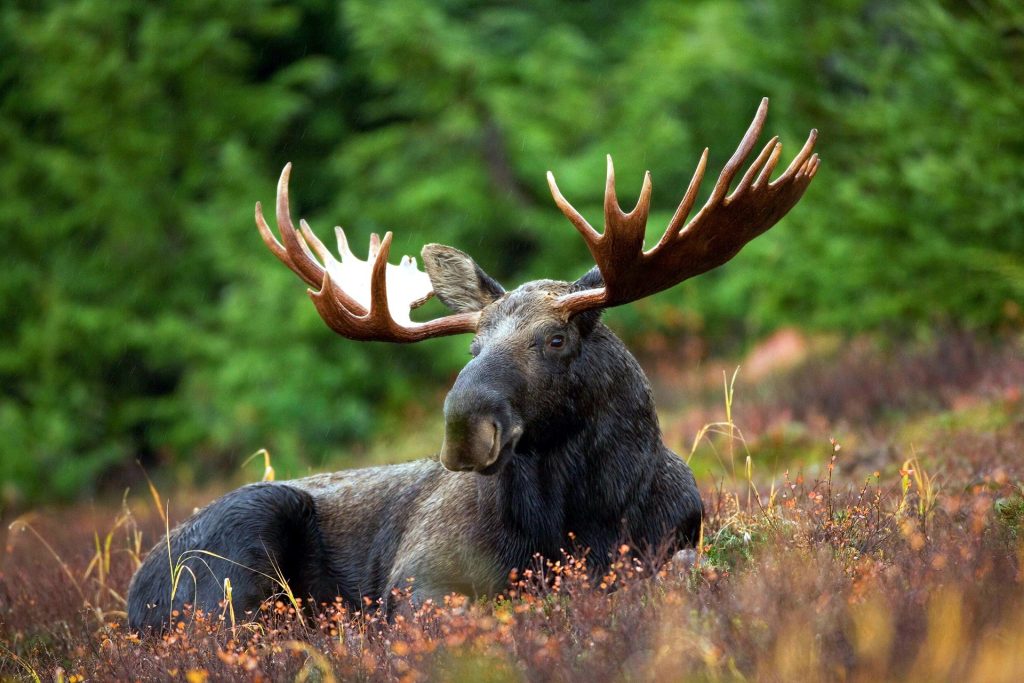
Algonquin Park is a world-renowned region in Canada teeming with wildlife. Because of the sheer size of this national park, a variety of camping types are available with varying levels of difficulty.
The park is truly magnificent throughout the year, with each season offering new and different perspectives of flora and fauna.
You might get lucky and catch a glimpse of a moose navigating through a bog or the howl of wolves at night! Wherever you stay and whenever you visit, you’re sure to have a breathtaking experience.
- Distance from Toronto: 3 hours
- Camping Type(s): Car + Backcountry
- Backcountry Access: Canoe + Portaging + Hike In
- Backcountry Difficulty: Low to High
Grundy Lake Provincial Park
This hidden gem of a park is the perfecting stepping stone for novice backcountry campers.
The park offers both car and backcountry camping, with easily accessible backcountry campsites situated only a short paddle from the launch points.
Motorized boats are restricted on some lakes bringing a sense of calm and serenity to the park. And, as a bonus, the fishing is superb!
- Distance from Toronto: 3.5 hours
- Camping Type(s): Car + Backcountry
- Backcountry Access: Canoe
- Backcountry Difficulty: Low
Bruce Peninsula National Park (Tobermory)
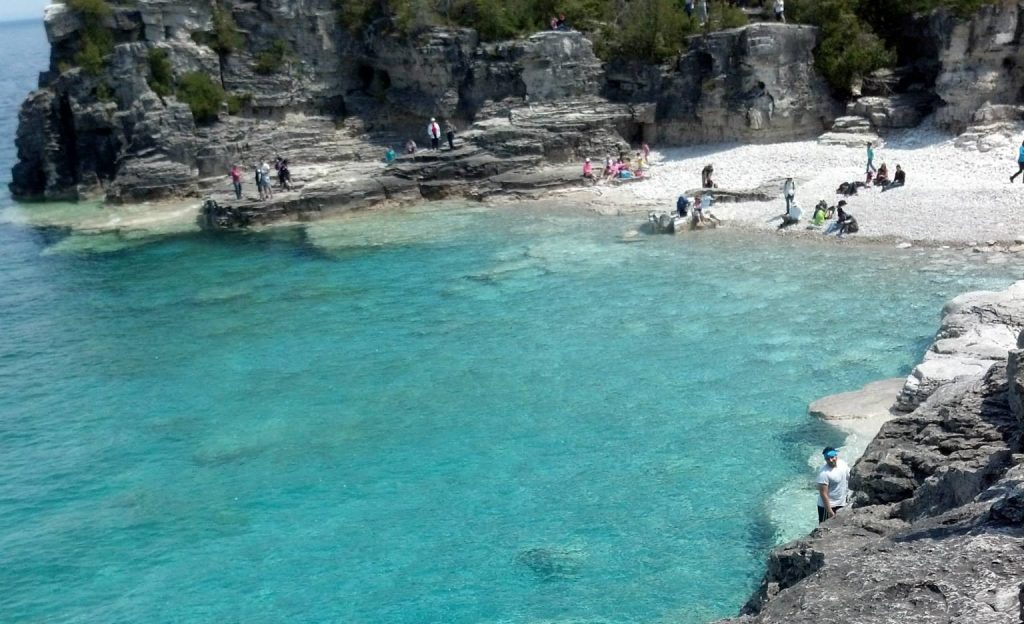
Surrounded by emerald coloured waters, Bruce Peninsula and the town of Tobermory is home to towering cliffs, Flower Pot Island and “The Grotto”, a wave-carved cave that only the most inquisitive venture to enter.
There is plenty of hiking to be had, including along the Bruce Trail and a seemingly endless lakeside with spectacular vistas of Georgian Bay.
During peak season in the summer months, Tobermory is a popular destination for Ontario locals and international visitors, so the park and surrounding areas can get quite busy.
- Distance from Toronto: 3.5 hours
- Camping Type(s): Car
- Backcountry Access: n/a
- Backcountry Difficulty: n/a
Massassauga Provincial Park
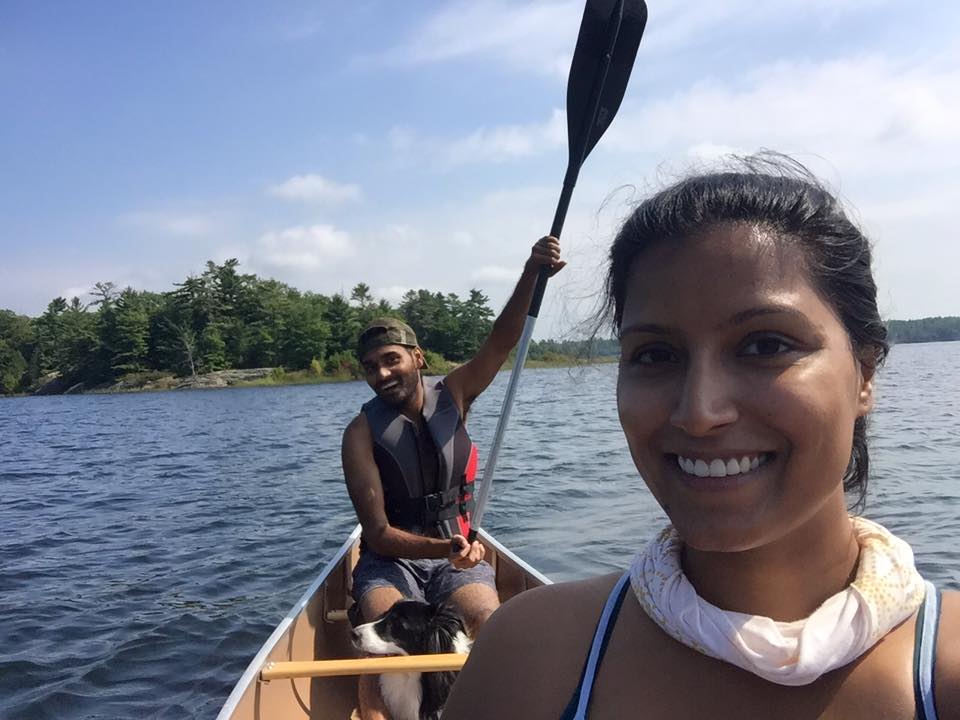
Strictly a backcountry camping park in Ontario, Massassauga is situated on Georgian Bay along a stretch of islands, inland forests and lakes.
Access to available campsites is via canoe, kayak or boat, and since Georgian Bay is notoriously windy, paddling across the waterways can be challenging to novice paddlers.
However, we navigated the larger bodies of open water without any issues during our first backcountry camping experience as a couple (which included our two dogs!).
Keep an eye out for rattlesnakes though, the park is named after them!
Distance from Toronto: 2.5 hours
Camping Type(s): Backcountry
Backcountry Access: Canoe + Portaging
Backcountry Difficulty: Moderate
Sandbanks Provincial Park
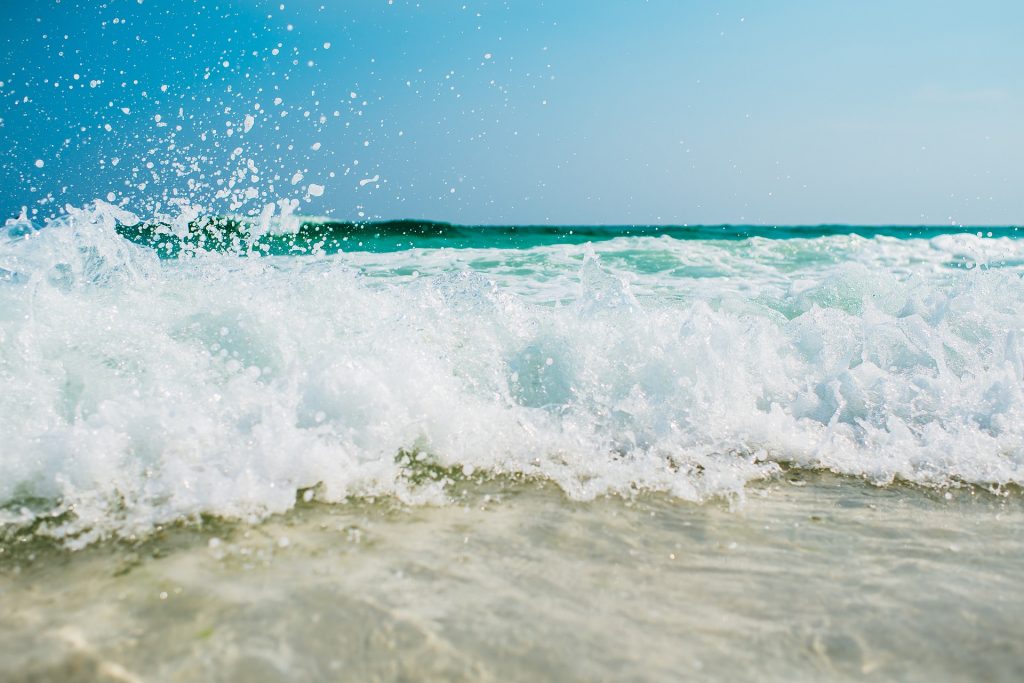
Located in Prince Edward county due east of Toronto, Sandbanks combines #CampLife with #BeachLife.
The park is tailor-made for families, jam-packed with activities and programs to keep kids and adults occupied all day long.
Explore the expansive sandy beaches, with shallow waters and gentle drop offs. Climb dune formations, bird-watch during the migration season, cycle the dedicated bike-paths, visit local wineries, or even go antique shopping… There are so many activities to choose from!
- Distance from Toronto: 2.5 hours
- Camping Type(s): Car
- Backcountry Access: n/a
- Backcountry Difficulty: n/a
Bon Echo Provincial Park
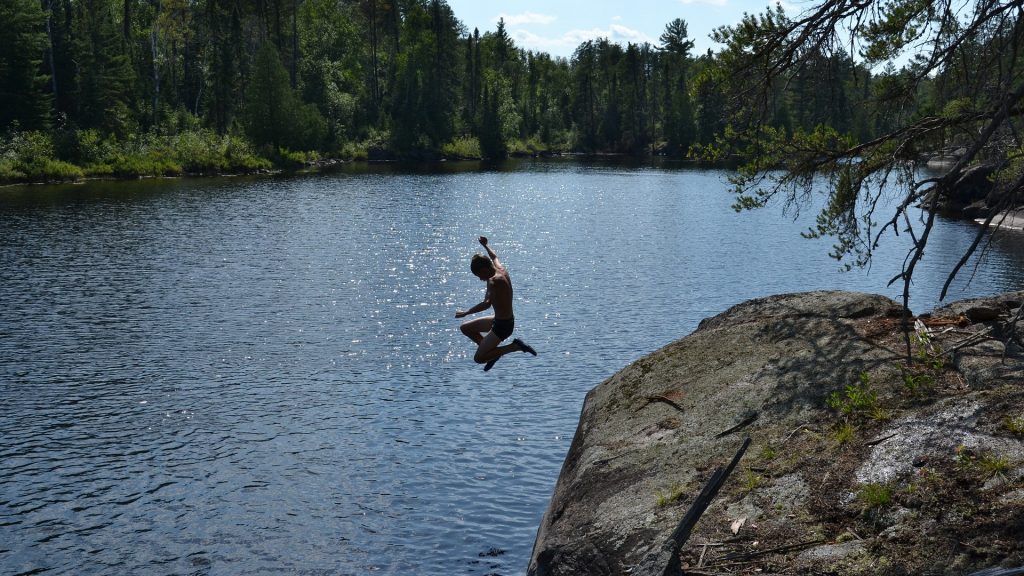
Bon Echo offers camping experiences for everyone including RV, car, backcountry and roofed accommodation options.
The park contains hiking trails that range from 1 km to 17 km in length, interpretive boat tours, and the 100-meter-high Mazinaw Rock featuring over 200 indigenous pictographs.
This park has something for everyone, except Fido… [No dogs are allowed]
- Distance from Toronto: 3 hours
- Camping Type(s): Backcountry
- Backcountry Access: Canoe + Hike In
- Backcountry Difficulty: Low to Moderate
Sauble Falls Provincial Park
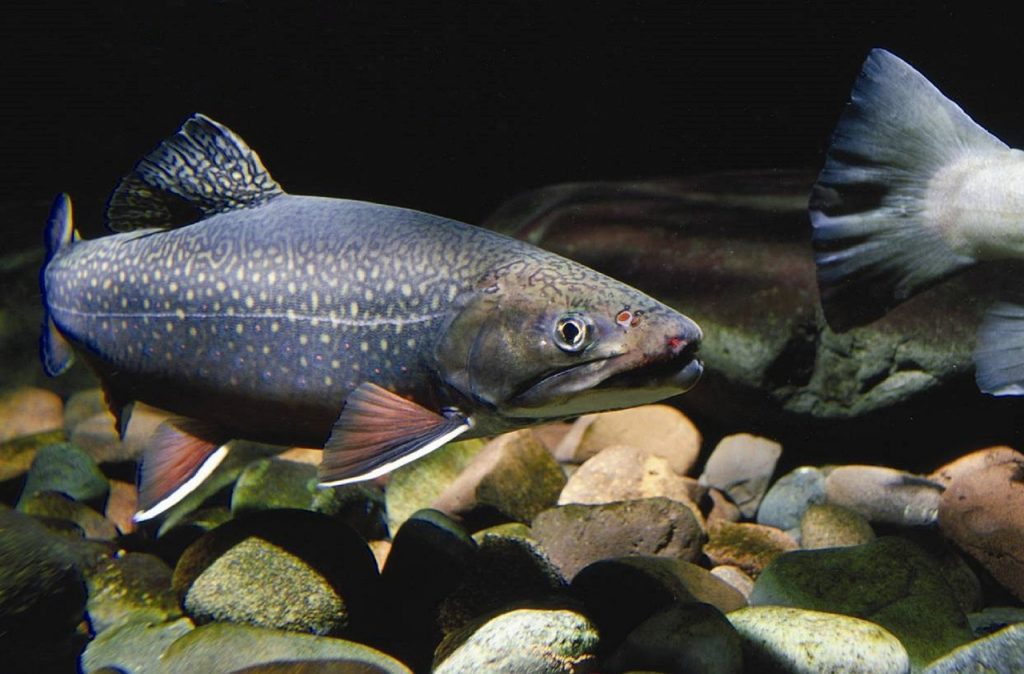
Sauble Falls is a fantastic little Ontario park for car campers – it’s the perfect base camp to visit nearby Sauble Beach and the Bruce Peninsula.
The park is dotted with picnic spots and includes a children’s playground. During spawning season, watch trout and salmon attempt to leap over the falls as they swim upstream to inland spawning grounds.
The Rankin River ends at Sauble Falls and is ideal for novice canoeists. So, rent a canoe and give it a try if you’re up for an adventure!
- Distance from Toronto: 3 hours
- Camping Type(s): Car
- Backcountry Access: n/a
- Backcountry Difficulty: n/a
French River Provincial Park
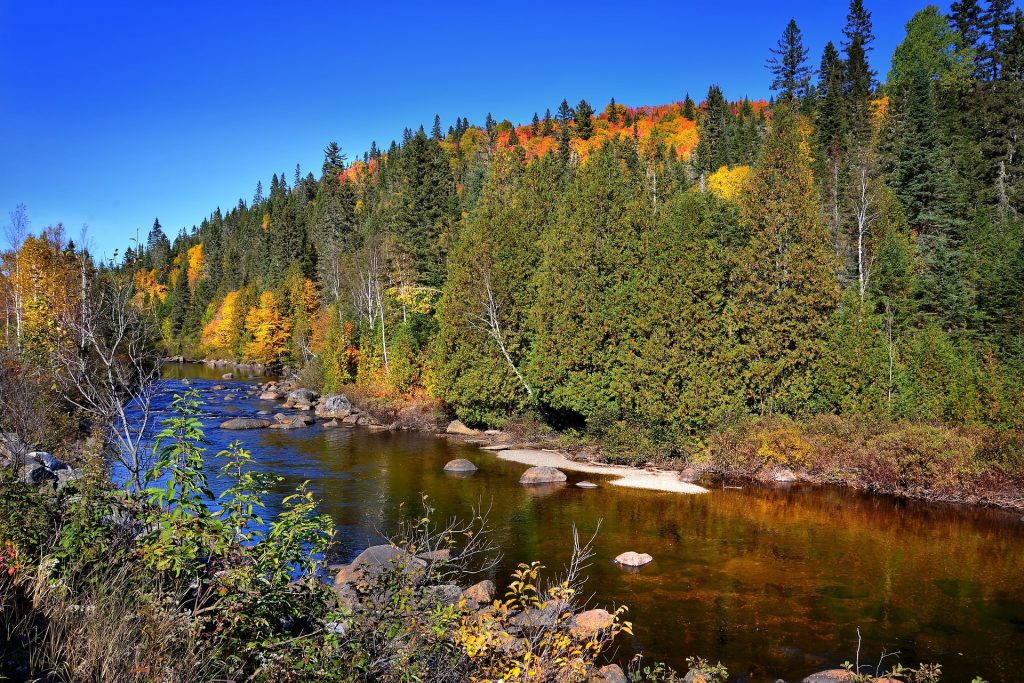
A river of national historic significance in Ontario, the French River stretches 105 km between Lake Nipissing and Georgian Bay.
Paddle through interconnected lakes, gorges and rapids, and explore the route once regularly navigated by indigenous people, French explorers, fur traders and voyagers.
All backcountry sites along the French River are first-come-first-served, so if you paddle to a spot only to find it occupied you’ll have to continue down river until you find an available site.
Channel your inner Lewis and Clark as you explore the river and reconnect with nature!
- Distance from Toronto: 4 hours
- Camping Type(s): Backcountry
- Backcountry Access: Canoe
- Backcountry Difficulty: High
3. How to Book a Campsite in Ontario
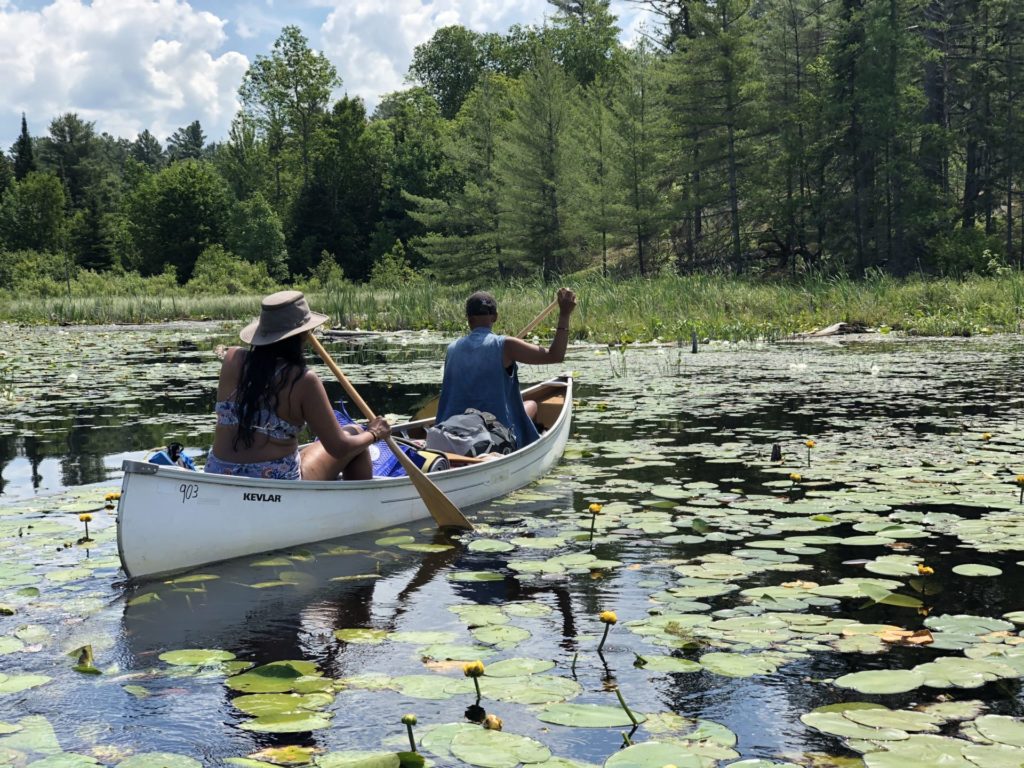
Okay, now that you know which park and region you want to explore, finding and booking campsites is incredibly easy.
- You can only book provincial campground campsites 5 month in advance.
Campers in Ontario can reserve campsites two ways:
- By phone by calling 1-888-ONT-PARK
- Online by visiting https://www.ontarioparks.com/reservations
It’s as simple as ordering something from Amazon – just a few clicks and you’re all set!
Pro-tip: Want to camp for free in Ontario? Check out How to Camp on Public Land (aka Crown Land) in Canada.
How to Book a Campsite Step-by-Step
Here’s a step-by-step guide on how to find and book a campsite in Ontario.
Step 1 - Visit OntarioParks Website
Visit https://www.ontarioparks.com/reservations and click on Reserve Online Now – Sign in.
Step 2 - Search by Date and Park
Enter your search preferences by navigating through the drop down menus.
Then select one of the buttons under Find Sites to display the search results.
Step 3 - Review Campgrounds and Campsites
Depending on the park you’ve selected, campgrounds or individual campsites will be displayed.
Step 4 - Check Availability
Click on each campground to check availability. Available campsites are marked in green.
If you click on Legend, you’ll see what each icon and color indicates.
Step 5 - Review Campsite Details
Select a campsite to view the price and site details including pictures.
If you’re happy, click Reserve!
Step 6 - Book Campsite
Follow the next set of prompts to guide you through the final booking process!
Step 7 - Registration Process (If Applicable)
If this is your first reservation, you will also need to register a new account. Your account will allow you to modify, view and print details of your bookings.
That’s all there’s to it… You’ll be pitching a tent and roasting marshmallows in no time!
4. Camping Equipment Required
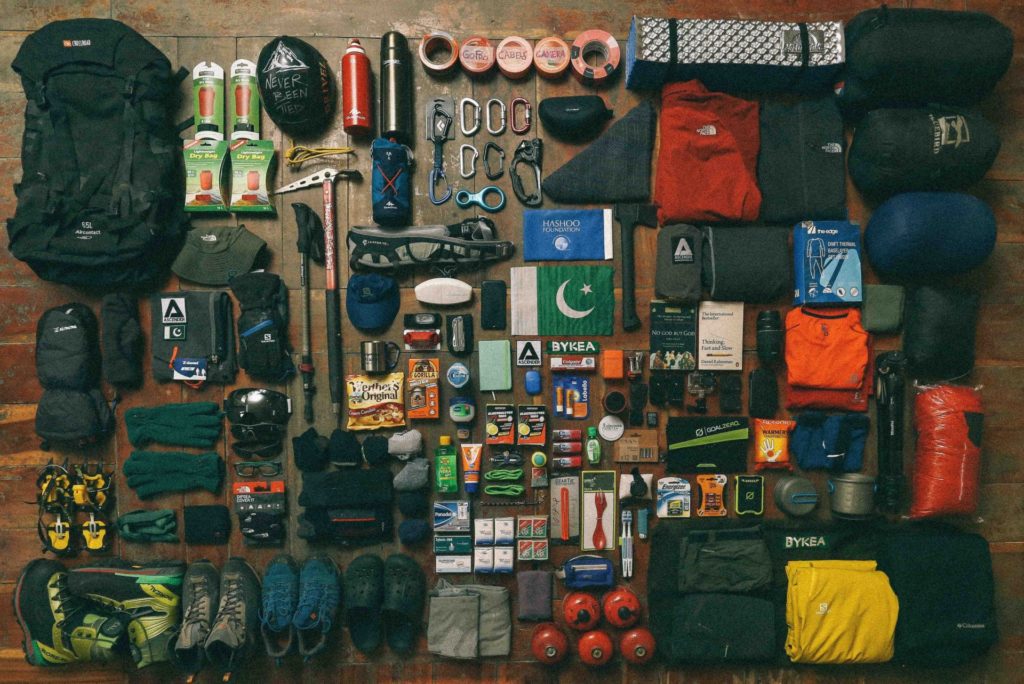
Equipment plays a very important role in a successful camping trip regardless if you’re within Ontario or anywhere else in the world.
When purchasing, renting, or borrowing equipment, consider the following:
- What season(s) will it be used?
- How many people will be using it?
- Will it be used for car or backcountry camping?
- Should I select gear for dual camping styles?
I’ve gathered and refined my camping equipment over the past decade, changing or improving items as my needs and wants have changed.
I highly recommend purchasing, renting or borrowing versatile equipment, while keeping the following tips in mind:
- Waterproof materials will keep you and your supplies dry, even in a downpour.
- Tents with a free-standing design (i.e. no need for ground stakes) are great for rocky or sandy campsites.
- Equipment with simple set-up / take-down characteristics are ideal.
- Ultra-light weight usually comes at a premium so budget accordingly.
Car Camping Equipment
For car camping, your vehicle does all the heavy lifting, so you can take all your gear and even afford to bring some luxury items.
Pro-tip: If you need a comprehensive list of essentials to bring car camping, check out my helpful article The 10 Most Important Car Camping Essentials.
Backcountry Camping Equipment
When it comes to backcountry camping, you (and sometimes your canoe) do ALL the lifting. So, light-weight, durable and versatile equipment is a must!
And, depending on the level of backcountry exploration, safely navigating the trails and tributaries is critical. Most backcountry gear is similar to car camping, however a few extra equipment is necessary.
Pro-tip: Check out my list, 15 Backcountry Camping Essentials, for what I recommend you bring.
5. How to Meal Plan for Camping
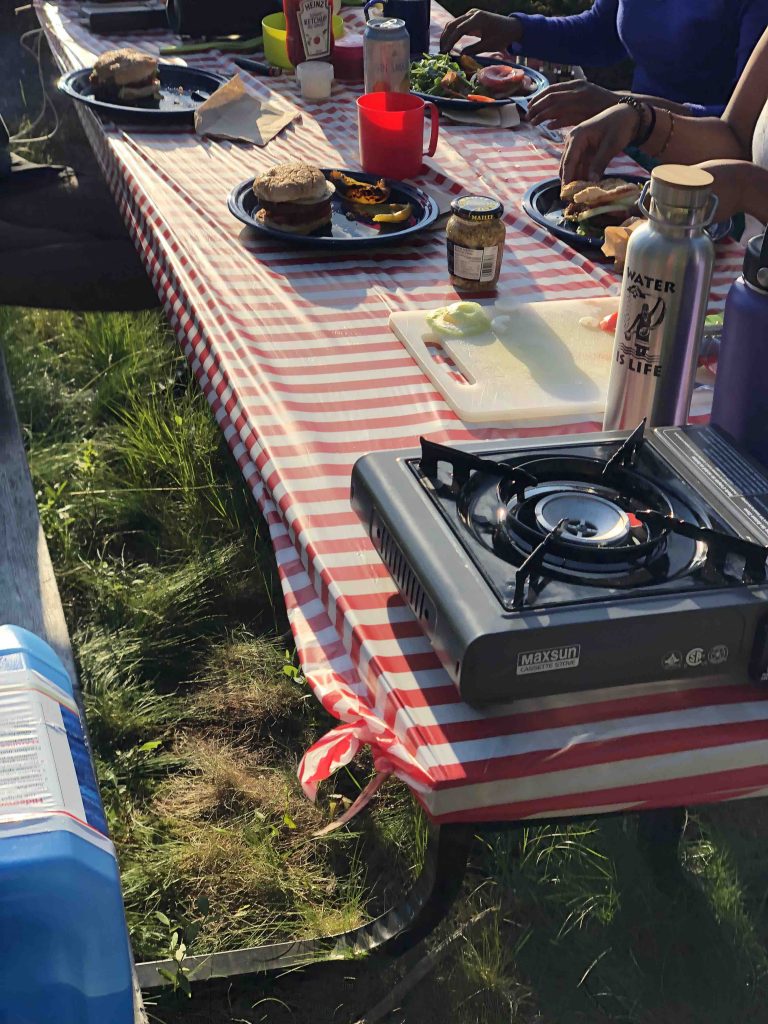
Whether you’re camping in an established campground or deep in the backcountry, you’ll want to eat food that keeps you nourished and also tastes great.
Meal planning will remove the guess work when it comes to cooking and will help you nail down your grocery list. That way, you’re not scrambling to think of what to eat on your way to the woods.
For any type of camping, typically you’ll need to consider three meals per day (breakfast, lunch and dinner), light snacks between meals to keep your energy up, and having plenty of water throughout the day to keep yourself hydrated.
Food for Car Camping
When I car camp, it’s like I’m essentially home. So, I tend to plan fairly extravagant meals since weight and supplies aren’t limited.
I like to bring fresh produce and perishables including apples, oranges, onions, tomatoes, potatoes, bell peppers, eggs, hot dogs and bread.
I store everything in a portable cooler to keep it fresh for longer.
Pro-tip: Check out Where is the Best Place to Keep a Cooler While Camping for helpful tips.
Food for Backcountry Camping
However, for strenuous backcountry expeditions, caloric dense, great tasting and easy to prepare meals are best.
I tend to pack a mixture of pre-packaged, freeze-dried meals (e.g. Backpacker’s Pantry or Mountain House) as well as some fresh food for canoe trips.
This keeps my overall pack weight low, but still lets me enjoy fresh food in the woods.
Pro-tip: Our favourite (plant-based) camping friendly recipes as well as so many others can be found online so we suggest planning your meals well ahead of time. And, if you can’t wait, try them out at home to see if they pass the pre-camping taste-test!
6. Fun Activities While Camping
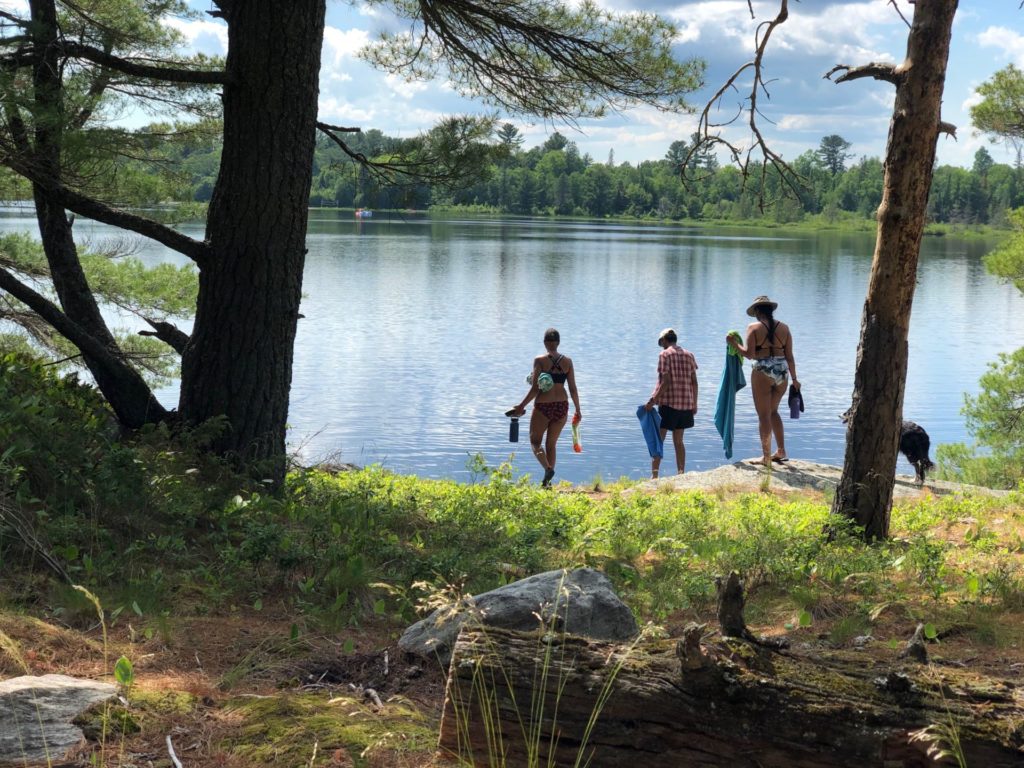
In addition to just being in nature, camping also offers an opportunity for individuals to hone skills and families to connect through various activities.
If you’re camping by yourself, or with others, below is a list of activities you can do:
Campground Programs for Kids
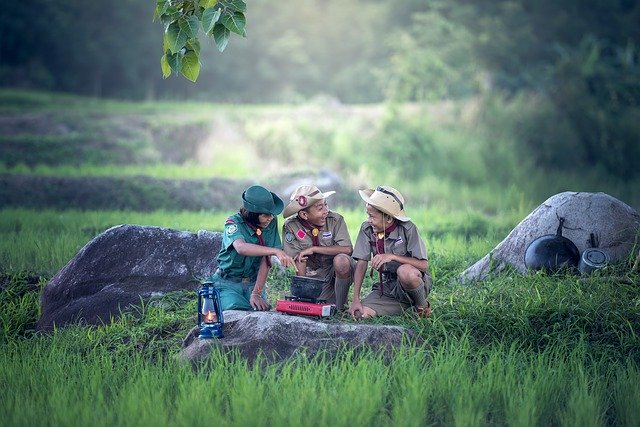
Arts and crafts, nature talks, and more! Check-in with the ranger station when you get to the campground.
Fishing
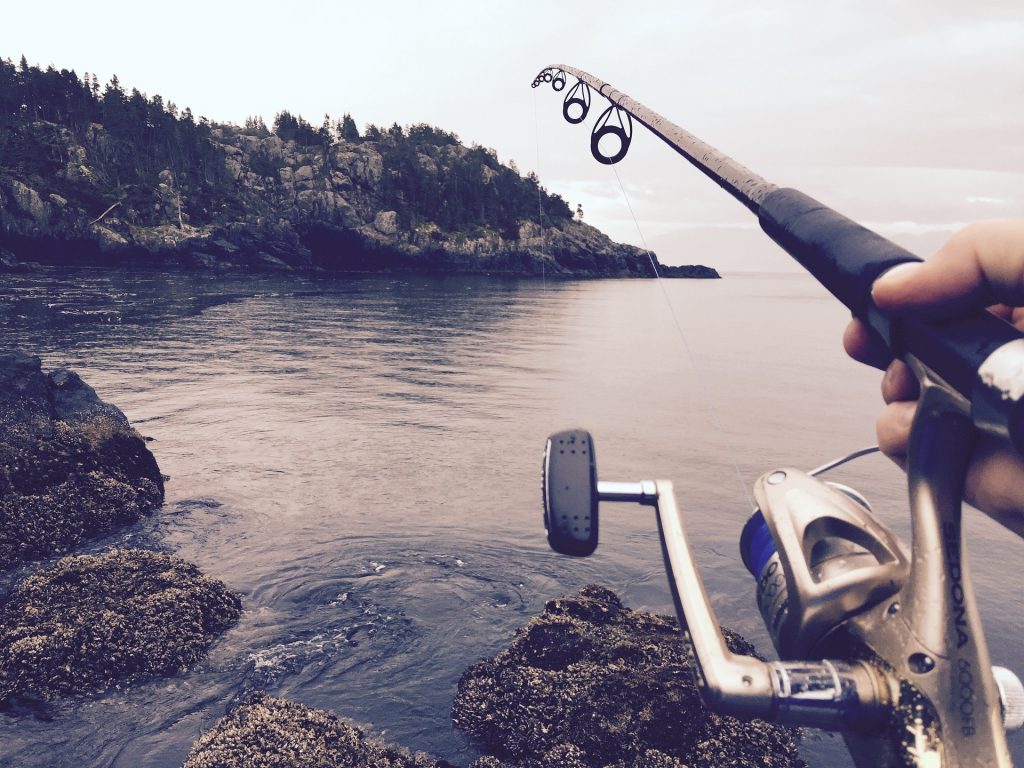
See if the fish are biting, but don’t forget to purchase a fishing license! And, if you’re like me, it’s always catch and release.
Whittling (carving) and Bush Craft

Bring an appropriate knife and practice safe knife-handling skills to prevent injuries. This how-to video is great [YouTube Link]!
Pro-tip: Looking for the perfect camping knife? Check out How to Pick the Best Camping Knife.
Fire Making
Turn fire making into a competition and see who can start a fire first!
Pro-tip: Never made a fire before? Learn how to make a fire easily by following my helpful guide, How to Make a Fire in 5 Simple Steps.
Slacklining
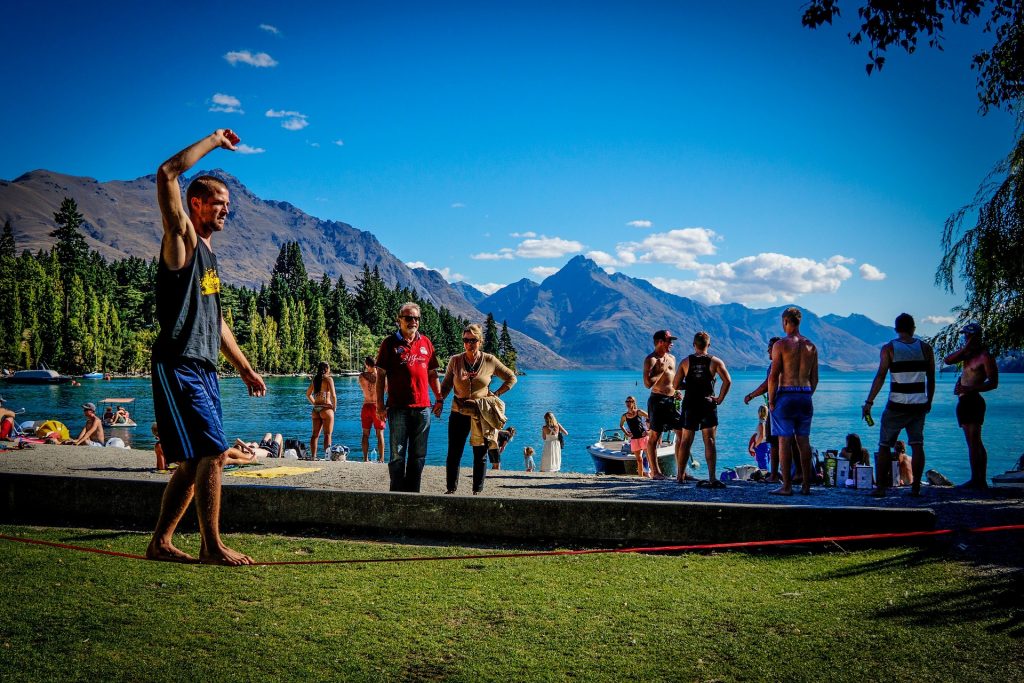
Slacklining is easy to set up and hours of fun to try. You can order an inexpensive slackline kit online. This kit from Amazon is my favourite [Slackline Kit for Beginners].
Wildlife Watching
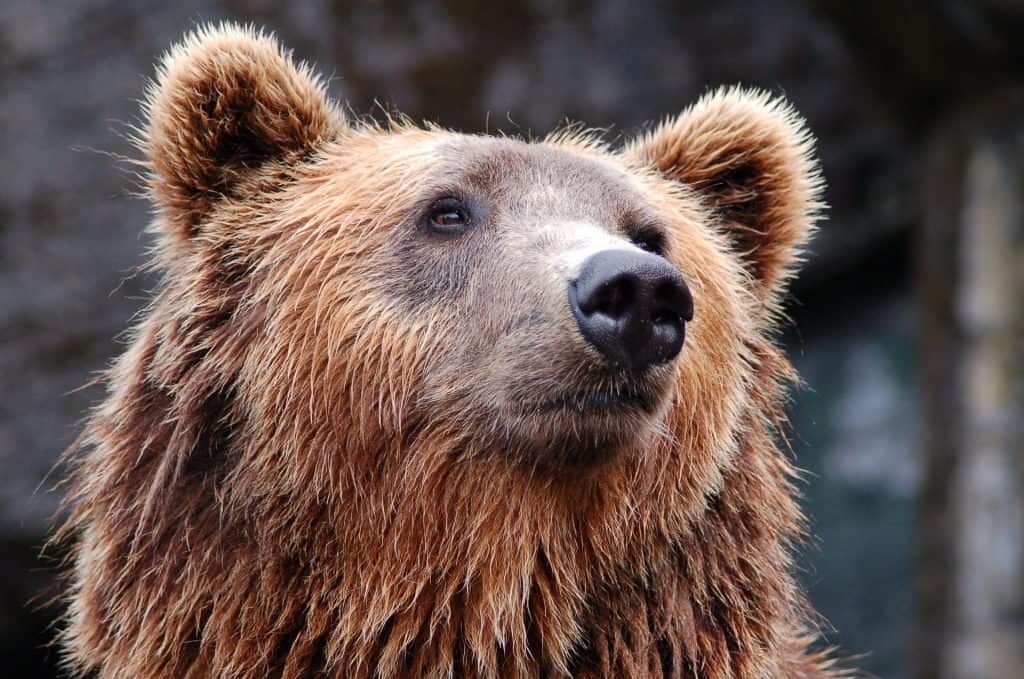
Practice patience and keep a keen eye out for wild animals. Birds, deer, moose and bears can be watched from a safe distance.
Night Photography
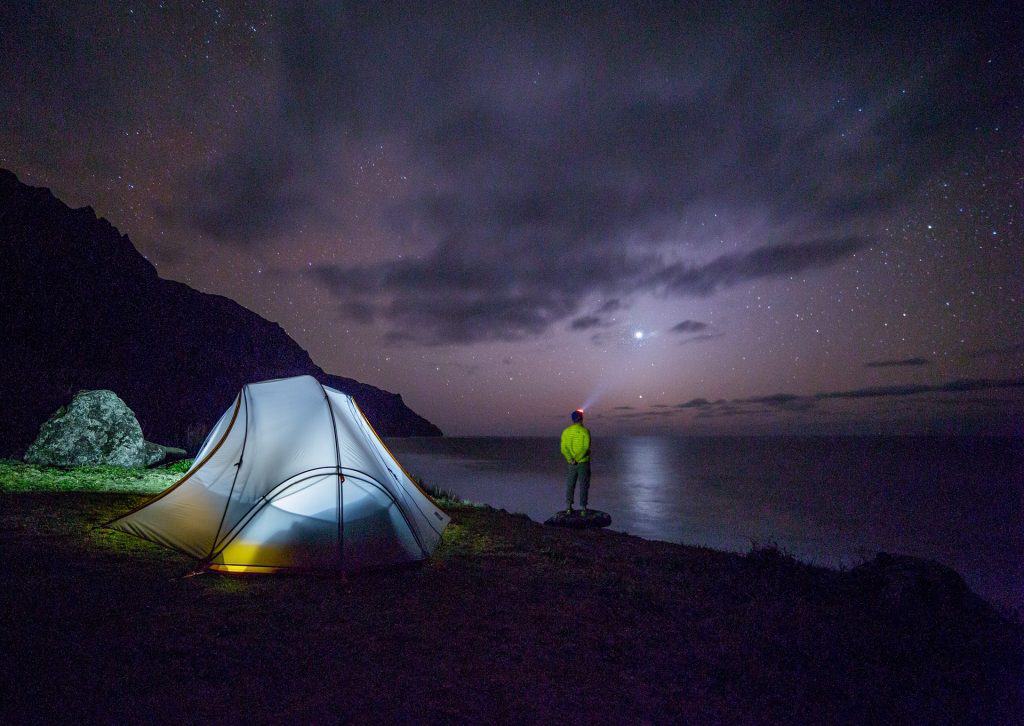
Photography at night can reveal so many things hidden in the darkness.
Need night photography tips? Check out this helpful how-to video on YouTube.
Star Gazing

Find a clearing, set up a blanket and just look up! Hopefully the full moon isn’t out, and the light pollution is minimal.
Board Games
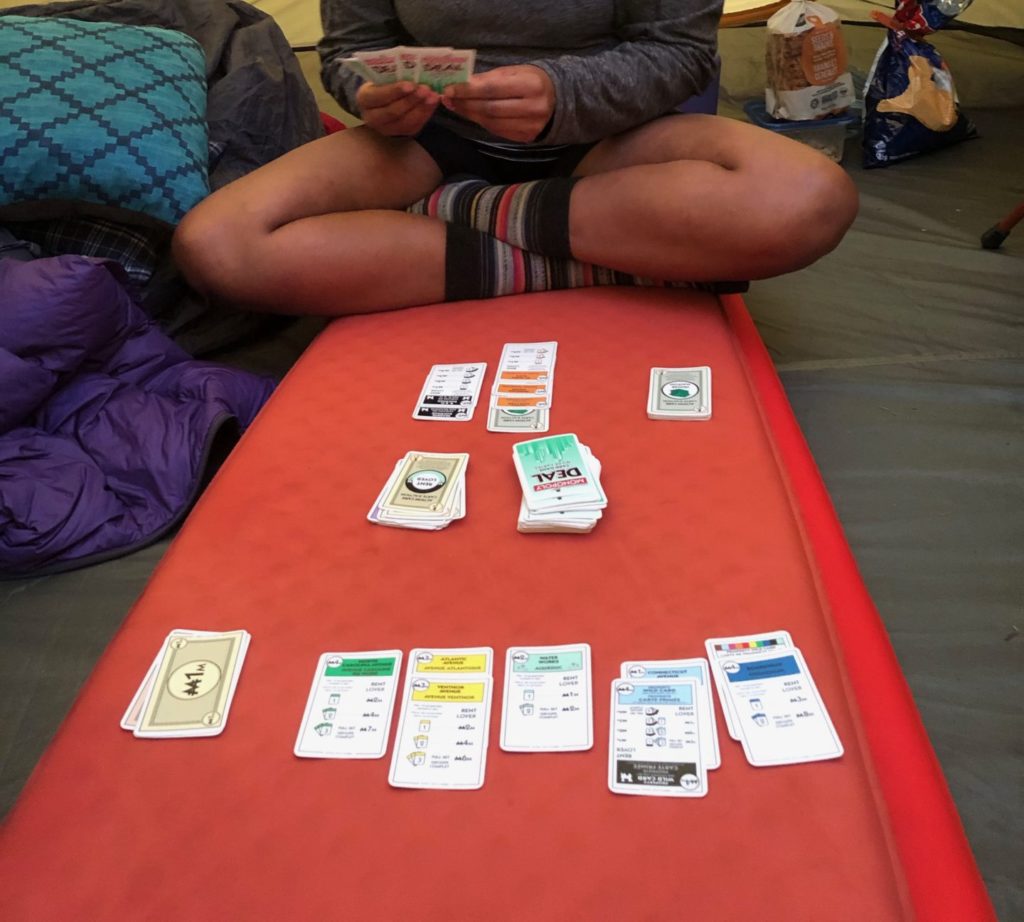
Hours of fun, board games are great for kids and adults!
Check this list of fun Two-Player Board Games.
Charades
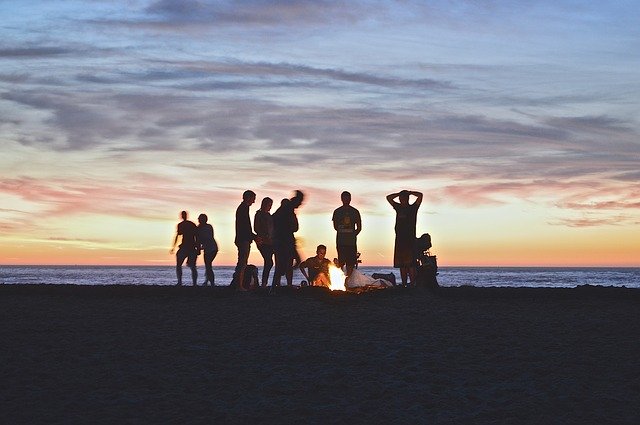
A campfire favourite for young and old! Channel your inner acting ability with Charades.
Canoe or Kayak
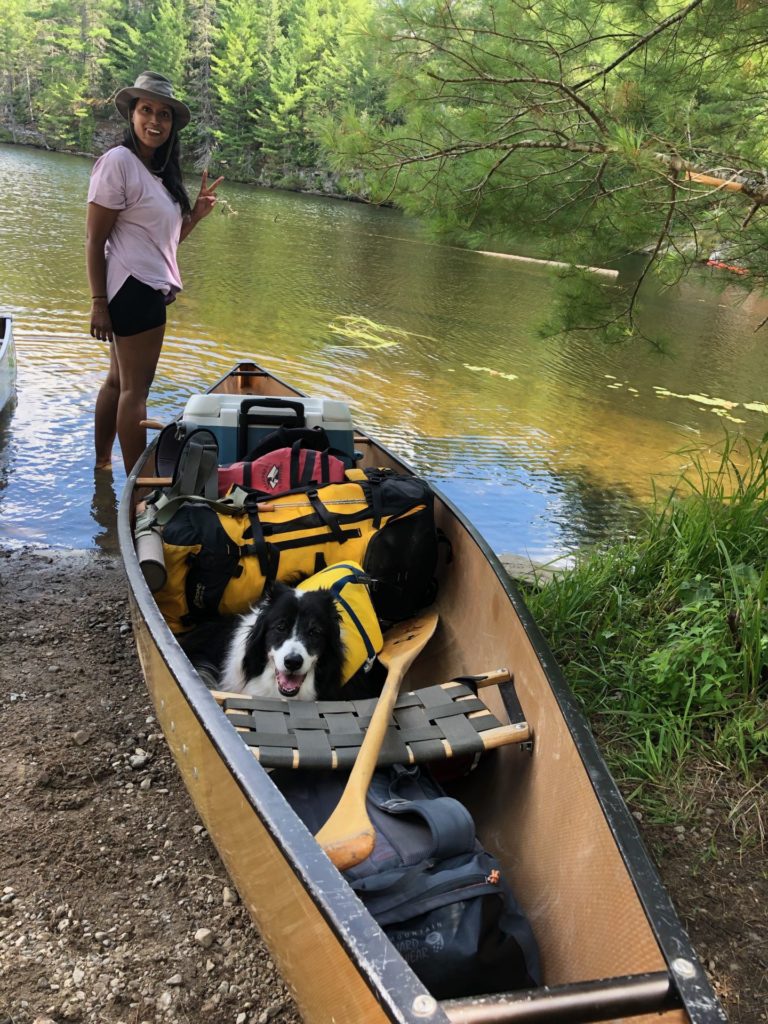
Paddling can be a lot of fun, whether it’s solo or with a partner!
Scavenger Hunt

Release your inner Nicholas Cage from National Treasure and plan a scavenger hunt.
Camping is a fantastic opportunity to connect with nature, your loved ones and yourself.
So, do yourself a favour and start planning your next camping trip in Ontario and get ready to enjoy the outdoors!
Do you have any additional tips or tricks for Camping in Ontario? Let me know in the comments below.
This article contains affiliate links, which help support this blog at no cost to you!


